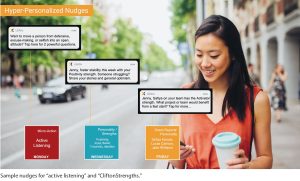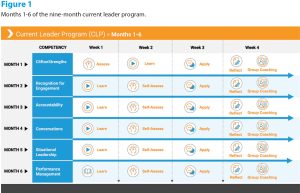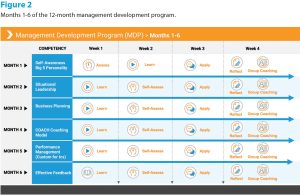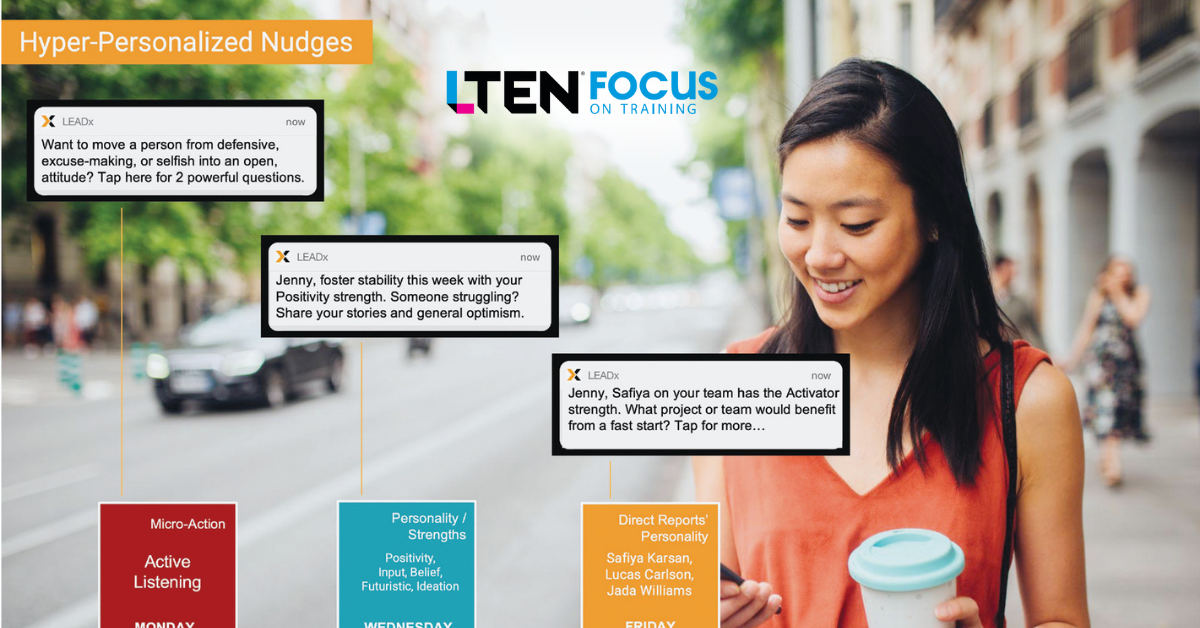
Cover Story – By Kevin Kruse
Creative solutions helped build a thriving pipeline
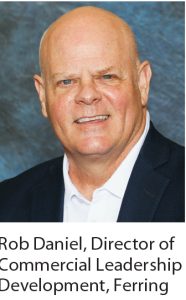 How does a mid-sized biopharmaceutical company scale leadership development to every level of its sales force without sacrificing quality?
How does a mid-sized biopharmaceutical company scale leadership development to every level of its sales force without sacrificing quality?
Here’s the story of how Ferring Pharmaceuticals accomplished exactly that. Led by Rob Daniel, director of commercial leadership development, they partnered with LEADx and together we leveraged microlearning delivered in the flow of work, personalized nudges and a “flipped classroom” approach to group coaching.
Standing at more than 6,000 employees, Ferring is a research-driven, specialty biopharmaceutical group that pioneers life-changing therapies to help people build families and live better lives. In the United States, Ferring is a leader in reproductive medicine, maternal health, urooncology and in specialty areas within gastroenterology and orthopaedics.
Three Distinct Curriculums for Three Distinct Audiences
Daniel identified three key buckets of leaders that he wanted to develop.
- Current Leader Program (CLP). This is for their current first-line and second-line leaders. (Figure 1) “With this group,” Daniel said, “the focus is on maintaining and improving our already high engagement scores. Based on their Gallup Q-12 engagement scores, we designed a curriculum centered around the leadership behaviors that are the most closely correlated to engagement.”
- Management Development Program (MDP). This is for employees who are on track to become district managers. They have a formalized individual development plan (IDP), have had serious discussions about leadership as a career choice, and have expressed a desire to lead. (Figure 2) “At this level,” Daniel said, “I want to develop critical leadership capabilities that will enable these employees to step into a leadership role and immediately thrive.”
- Intro to Leadership Program (ILP). This program is designed for individual contributors at Ferring who want to learn more about leadership. (Figure 3) “By putting together a six-month curriculum for individual contributors,” Daniel pointed out, “we created a series that would help individual contributors determine if they are interested in moving into a leadership role in the future. It would also help them learn key self-leadership behaviors that are valuable regardless of title.”
Perhaps one of the most impressive and unique considerations in the design of these is the fact that there are three distinct series for three distinct audiences. Each level focuses on specific behaviors that learners can immediately apply on the job.
A ‘Flipped Classroom’ Approach
“According to the 70-20-10 model,” Daniel said, “when you create a capability, only 10% of that capability is created during the training event, 20% is created through feedback, and 70% comes from what you do on the job. That model is at the foundation of our approach. We really emphasize the 70% using micro-learning and nudges.”
The cadence works like this: One weekly microlearning or application exercise per week for three weeks, followed by a cohort-based group coaching session.
“Each month, we focus on a different capability,” Daniel said. “For three weeks, you’re hitting key concepts and applying what you learned on the job through micro-learning exercises. That cadence helps build the capability much more effectively than a one-and-done.”
In the group coaching session, learners wrap up that month’s learning with one another and with a seasoned expert to facilitate the conversation. Cohorts share what they learned, how they applied key learnings on the job, what questions they had and what challenges they faced. The session also helps establish a clear finish line for the self-paced components.
Purposeful Tech Enables Application and Practice
What really makes Ferring’s program so effectively deep is how they use technology. They didn’t just offer a large catalog of learning lessons and ask their sales force to tune in as they please (which usually translates to low completion and essentially zero behavior change). They also didn’t force highly busy sales leaders to set aside two or three days for long in-person sessions.
Instead, they leveraged tech to stay focused on their top goal—behavior change. This included:
1. Hyper-personalized nudges.
Nudges prompt leaders to practice what they have learned. For example, learners developing trust might receive a nudge that says “A foundation of trust is keeping your commitments, both big and small. This week, be mindful of this. Do you return calls when you say you will? Do you finish your assignments when you’ve promised? Do you show up for events you’ve said yes to?”
Nudges like these have a cumulative effect on habit-building. And once the leadership series is “over,” weekly nudges can continue to help learners practice.
2. Microlearning is delivered in the flow of work.
“Microlearning helps to bring the learner to the training, rather than the training to the learner,” Daniel said. The microlearning includes everything from bite-size video clips to reflection sheets, micro-coaching exercises, book summaries and podcasts.
“Our salesforce has a lot on their plate,” Daniel emphasized. “They don’t have time to cut out of their schedule to go off and attend a two- or three-day training course. They also spend their time in their cars, on planes and with customers. To have something that’s flexible and can meet them where they are is essential.”
3. Live, expert-led group coaching sessions:
Capping each month with live group coaching motivates learners to complete the preceding exercises so that they can keep up with the conversation. It also ensures that employees at every level are getting monthly access to an expert coach and to live peer learning.
The blended approach of nudges, microlearning and group coaching ensures that the learning is constantly being reinforced and applied in a variety of engaging ways.
Scaling Behavior Change at Every Level
By training current sales leaders in behaviors tied to engagement, Ferring is set to uphold their thriving culture. And by scaling such in-depth offerings to the individual contributor level, Ferring has also set itself up to build a thriving pipeline of diverse leaders. As behavior starts to improve, the impact will be immediate. And at the same time, the competitive advantage one, two or five years down the line as Ferring’s pipeline continues to diversify and strengthen will be exciting to watch.
 Kevin Kruse is CEO of LEADx and a former executive director of LTEN. Email Kevin at kevin@leadx.org.
Kevin Kruse is CEO of LEADx and a former executive director of LTEN. Email Kevin at kevin@leadx.org.

